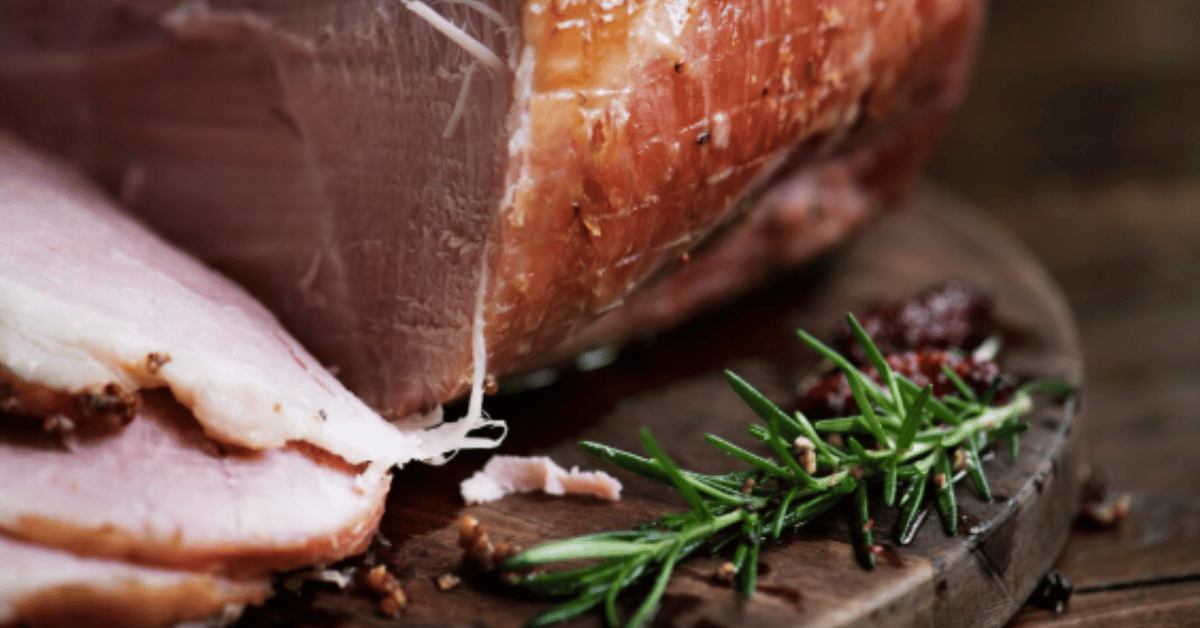Speck meat, often recognized for its smoky aroma and delicate yet firm texture, is far more than just another cured delicacy. Within the first taste lies centuries of tradition, craftsmanship, and an understanding of how preservation methods evolved into culinary art. For searchers seeking clarity, speck meat is a cured and lightly smoked ham, typically originating from Alpine regions where preserving pork was as much a necessity as it was a celebration of flavor. Unlike standard smoked ham, speck undergoes a dual process: both smoking and air-drying, resulting in a nuanced flavor that balances smokiness with gentle herbal notes. The intent behind this article is to explain what speck meat is, how it differs from similar cured products, its cultural significance, and how it fits into modern diets. By doing so, readers not only learn what speck is but also why it remains iconic in kitchens across Europe and beyond.
The Origins of Speck Meat
The origins of speck meat can be traced back to Alpine communities, especially in South Tyrol, where rugged mountains and cold climates demanded innovative ways to preserve food for long winters. Farmers developed speck as a solution: a ham cured with salt and herbs, then gently smoked and left to dry in the mountain air. Over time, this preservation method became a culinary signature, moving from necessity to tradition. What makes speck unique is the combination of Mediterranean seasoning techniques—using juniper, rosemary, and bay leaves—with Northern European smoking traditions. This blending of methods created a flavor that is both aromatic and enduring. As trade expanded across Europe, speck gained recognition, becoming a staple in festive meals and an emblem of regional identity. Historical records even suggest its role in community celebrations, where speck symbolized both prosperity and shared heritage.
Distinguishing Speck Meat from Other Cured Meats
While cured meats like prosciutto and smoked ham share similarities with speck, each has defining characteristics that separate them. Prosciutto, for instance, is exclusively air-dried, emphasizing sweetness and tenderness without smoky undertones. Smoked ham, conversely, highlights its boldness through deeper smoke infusion, sometimes masking subtler herbal notes. Speck balances these two traditions, achieving complexity without overwhelming intensity. Its flavor profile is enhanced by careful curing with herbs such as bay leaf and coriander, followed by controlled cold smoking with beechwood. This dual process results in a product that is versatile, equally suited for rustic platters, soups, or gourmet dishes. Its firm but sliceable texture allows chefs and home cooks to adapt it in multiple ways. Understanding these differences helps consumers appreciate speck’s special place within the family of cured meats, positioning it as a bridge between Mediterranean delicacy and Alpine heartiness.
The Traditional Preparation of Speck Meat
Crafting speck meat involves precision and patience. Traditionally, pork legs are first trimmed and seasoned with a mix of salt, pepper, juniper berries, and bay leaves. This stage sets the foundation for flavor, ensuring each cut absorbs the right balance of spices. After seasoning, the meat rests in a cool environment, allowing salt to penetrate and begin the curing process. Once cured, the ham undergoes cold smoking, typically over beechwood, which imparts its signature smoky aroma without overwhelming heat. The final stage is air-drying, often lasting several months, during which the meat develops its dense yet supple texture. This extended drying period also concentrates the flavors, resulting in speck’s recognizable taste. The balance of smoking and drying is what defines speck; too much smoke or insufficient drying can compromise the quality. Artisans pride themselves on maintaining these traditions, often passing down recipes unchanged for generations.
Cultural Significance of Speck Meat in Alpine Regions
In Alpine regions, speck meat transcends food, functioning as a cultural symbol of resilience and community. For centuries, families relied on it to survive harsh winters, making speck a marker of sustenance. Beyond its practical role, speck is integral to celebrations and social gatherings, where it is often paired with bread, cheese, and local wine. In South Tyrol, festivals celebrate speck, highlighting its role not only as nourishment but as heritage. The meat embodies regional values of thrift, resourcefulness, and craftsmanship, reflecting how Alpine communities balanced necessity with culinary ingenuity. As one historian put it, “Speck is a living dialogue between mountain survival and Mediterranean refinement.” This connection ensures speck’s preservation as more than just food; it is a cultural artifact. Today, its significance endures, with tourism and gastronomy intertwining to promote it globally as both tradition and gourmet experience.
Table 1: Comparing Speck Meat with Similar Cured Meats
| Feature | Speck Meat | Prosciutto | Smoked Ham |
|---|---|---|---|
| Preservation Method | Cured, cold-smoked, air-dried | Cured, air-dried only | Brined and smoked |
| Flavor Profile | Smoky, herbal, balanced | Sweet, delicate, mild | Strong, bold smoke flavor |
| Texture | Firm yet tender, sliceable | Soft, silky, melt-in-mouth | Dense, chewy |
| Common Regions | South Tyrol, Alpine areas | Italy (Parma, San Daniele) | Northern Europe, USA |
| Culinary Uses | Platters, soups, pasta, gourmet | Antipasti, salads, sandwiches | Breakfast, sandwiches, roasts |
The Role of Speck in Modern Cuisine
Speck meat has transitioned from farmhouse preservation to international gastronomy, gaining attention in fine dining and casual cooking alike. Chefs appreciate its versatility, using it to enhance soups, pasta, pizzas, and even desserts with savory contrast. In gourmet kitchens, speck is often paired with seasonal vegetables, incorporated into risottos, or wrapped around delicate proteins like scallops. Its smoky, herbal notes add depth without overpowering other flavors. Home cooks, too, have embraced speck, valuing it for charcuterie boards alongside cheeses, pickles, and bread. Unlike prosciutto, which is often eaten raw, speck adapts well to both cooked and raw dishes. Its adaptability makes it an ingredient that travels seamlessly across cuisines, from rustic Alpine traditions to urban restaurants worldwide. “Speck bridges the past with the present,” one chef remarked, “inviting us to taste history while inspiring creativity in every dish.”
Nutritional Profile and Health Perspectives
Speck meat, like other cured meats, offers both nutritional benefits and considerations. It is a good source of protein, providing essential amino acids important for muscle maintenance and repair. Additionally, speck contains minerals such as iron and zinc, which support blood health and immune function. However, its curing process means it is higher in sodium compared to fresh meats, requiring mindful consumption. Speck also has moderate fat content, with its balance of lean and marbled sections delivering both flavor and caloric energy. When enjoyed in moderation, speck can complement balanced diets, particularly Mediterranean-inspired eating patterns where small portions of cured meats are paired with fruits, vegetables, and whole grains. Modern nutritionists often emphasize portion control, suggesting that speck should be treated as a flavor-enhancing component rather than a staple. Its enduring appeal demonstrates that tradition and health can coexist when enjoyed thoughtfully.
Table 2: Nutritional Overview of Speck Meat (Per 100g)
| Nutrient | Approximate Value | Benefit |
|---|---|---|
| Calories | 250 kcal | Provides energy |
| Protein | 28 g | Supports muscle repair and growth |
| Total Fat | 15 g | Source of flavor and essential fatty acids |
| Saturated Fat | 6 g | Should be moderated for heart health |
| Sodium | 1800 mg | Preserves meat but requires moderation |
| Iron | 2.5 mg | Supports blood oxygen transport |
| Zinc | 3 mg | Boosts immunity and wound healing |
Preservation of Craftsmanship in a Global Market
As speck gains recognition outside Europe, questions of authenticity and craftsmanship arise. Traditional producers emphasize that true speck must adhere to protected standards, ensuring quality and cultural integrity. In South Tyrol, for example, “Speck Alto Adige” is a product of geographical indication, meaning only meat prepared in the region under strict guidelines can bear the name. These regulations safeguard not just taste but heritage, ensuring consumers receive genuine products rather than industrial imitations. Global markets, however, often introduce mass-produced alternatives that may lack the subtlety of traditional speck. This tension between authenticity and accessibility defines speck’s place in the modern food system. Producers respond by combining traditional methods with modern quality controls, hoping to protect heritage while meeting growing demand. Such efforts preserve speck not only as a product but as a living tradition that embodies both culture and craft.
Speck Meat in Everyday Life
In daily life, speck serves as both a staple and a delicacy. Families often slice it thin for breakfast alongside bread and butter, while chefs present it elegantly in curated charcuterie boards. Its versatility allows it to be equally at home in rustic farmhouse kitchens and Michelin-starred restaurants. In many households, speck is tied to memory—holiday gatherings, mountain hikes, or casual meals with wine and cheese. Its presence is not merely about sustenance but about ritual and connection. “Every slice tells a story,” one Alpine farmer once remarked, underscoring how deeply speck is woven into personal and collective identity. For younger generations, incorporating speck into contemporary cooking serves as a bridge to their roots, ensuring cultural continuity through food. Whether folded into pasta or layered onto pizza, speck remains a symbol of culinary resilience and timeless flavor.
Conclusion
Speck meat is more than preserved pork; it is a testament to human ingenuity, regional identity, and culinary artistry. Born out of necessity in Alpine regions, it evolved into a celebrated delicacy that unites preservation with refinement. Its distinction from prosciutto and smoked ham lies in the delicate balance of smoking and drying, delivering a nuanced taste that resonates with both tradition and modern cuisine. Through centuries, speck has embodied cultural resilience, serving as both nourishment and heritage. Today, it adapts effortlessly to diverse kitchens worldwide, appreciated by chefs and home cooks alike. While it requires moderation from a nutritional standpoint, speck’s rich flavor and cultural significance make it a worthy addition to thoughtful diets. As global markets expand, preserving authenticity becomes vital, ensuring that speck continues to represent not just food but history and craftsmanship. Ultimately, speck meat endures because it satisfies more than hunger—it feeds memory, culture, and imagination.
FAQs
Q1: What exactly is speck meat?
Speck meat is a cured and lightly smoked ham originating from Alpine regions, combining air-drying with cold smoking for a unique flavor.
Q2: How does speck differ from prosciutto and smoked ham?
Speck is both smoked and dried, unlike prosciutto which is only air-dried, and smoked ham which lacks herbal seasoning.
Q3: Can speck meat be eaten raw?
Yes, speck can be enjoyed raw in thin slices, though it is also commonly cooked into pasta, soups, or risottos.
Q4: Is speck meat healthy?
Speck provides protein, iron, and zinc, but its sodium content is high, so it should be eaten in moderation.
Q5: How should speck meat be stored?
Speck should be kept in a cool, dry place or refrigerated, wrapped tightly to prevent moisture loss and preserve freshness.











